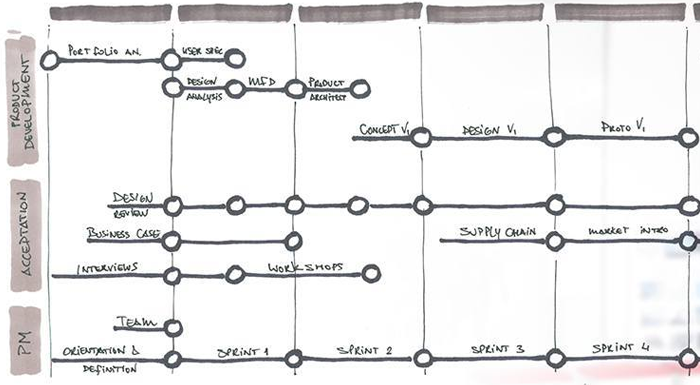
Post en Dekker develops innovations for the manufacturing industry. From our Bridging the Challenge programme, we have developed a roadmap for system development.
In this article, I will explain why the roadmap is such an important base when it comes to successfully designing product families and preparing them for the market.
Post en Dekker has three change programmes of which the objective is to let organisations achieve a higher output. Each programme covers a range of customer needs and has its own operating method.
Our Bridging the Challenge programme focuses on innovation and (further) developing product platforms. This programme provides answers to an increasing international competition and the associated need to continue to develop and deliver at the best possible integral costs.
What we see is that our clients want to improve their technology and cast it into a smart, flexible platform that complies with market demand. The necessary system development, from specification to prototyping, is done by Post en Dekker.
Our solution is creating product platforms which have been developed more efficiently and effectively and that can be produced much simpler, quicker and cheaper in a client-specific series, with less errors and costs of failure. This type of system development offers OEM developers simplified product management, a drastic reduction of costs of failure, cost reduction and reputational profit.
The benefits of a roadmap
We secure the entire trajectory for system development in an innovation roadmap. A roadmap is not the same as a schedule. The goal of a road map is to communicate a vision and only to show the essence of a development or a challenge. It focuses on risk reduction and acceptation, while a schedule focuses on lead times, capacity and quality.
To organise system development in a clever way and carry it out effectively, Post en Dekker has developed its own roadmap. The roadmap is made up of three main axes:
- Development – this part of the roadmap contains all development activities (specifying, designing, prototyping and testing) that must be initiated to develop a system or a set of modules.
- Acceptation – an innovation is only successful if accepted by all stakeholders. Everything that we think of and develop as a team should, before we enter further into the process, be accepted by the stakeholders. We use several tools to maximise the acceptation.
- Product management – during the development project, progress should be monitored, and acceptation should be obtained per sprint. Focus is on deliverables and the intended end result.
Below, several major strong points of the deployment of a development roadmap.
The roadmap is the blue print for the development, testing and making ‘market-ready’ the modular product families that comply with various client-specific market demands. Together with the client, we realise an integral and modular product design that corresponds with the supply chain of the OEM developer.
The roadmap translates the vision regarding a future product portfolio into concrete plans for innovation. It ensures that work is distributed properly, and activities are carried out efficiently and in time by the right people.
The roadmap stimulates people to think along. Because a roadmap provides insight into both the end goal and the steps towards it, more people will understand how activities relate and contribute to the greater whole. This will offer the project team inspiration and it will stimulate the members to think along.
The roadmap provides support in making decisions. Hundreds of decisions, big and small, will have to be made in realising a product portfolio that fits in with your vision. Because the roadmap points out the general terms, this can be used properly for daily choices that need to be made. It secures: “doing the right things, instead of doing things right”.
A roadmap provides support for the various departments to realistically assess and plan capacity and expenses. This way, a roadmap serves as a framework for, for example, project plans, capacity schedules, budgets and progress of presentations, that have to be made within the company.






